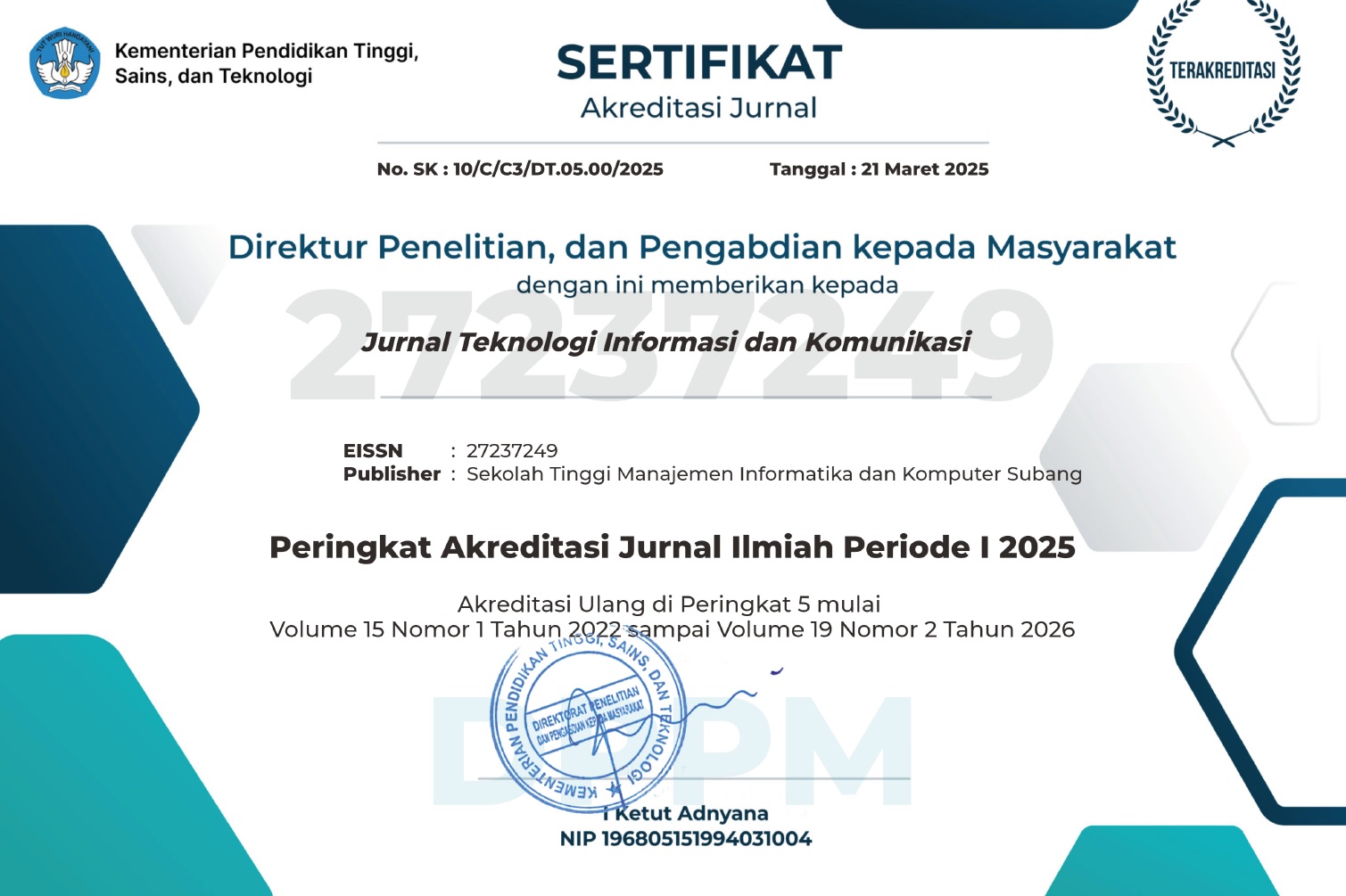Systematic Literature Review: Application of Internet of Things (IoT) for Smart Home Optimization

 This Abstract has been read 52 times
This Abstract has been read 52 times
Abstract
The Internet of Things (IoT) is one of the innovations in technology that utilizes internet connectivity as a medium to link devices for automatic data exchange. This study aims to analyze the development and implementation of IoT in the field of smart homes through a systematic literature review. The literature search process was conducted using the Harzing’s Publish or Perish software with the Google Scholar database and keywords relevant to the research topic. From an initial total of 158 journals, the selection and screening process based on the PRISMA 2020 guidelines resulted in 23 journals that met the inclusion criteria and were further analyzed. Term co-occurrence analysis using VOSviewer revealed three main research clusters: IoT integration in smart homes, system security, and internet-based smart home applications. The classification results show that the research focus is divided into four main themes: smart home security (34.78%), comfort and automation (30.43%), system integration (30.43%), and energy efficiency (4.35%). The security theme generally highlights sensor-based fire detection systems and real-time notifications, while comfort and automation focus on controlling household devices through voice assistants and mobile applications. The system integration aspect emphasizes device synchronization through Android platforms and Telegram bots, whereas research on energy efficiency remains very limited. Overall, IoT-based smart home research is still dominated by technical approaches, with little attention given to energy efficiency and cybersecurity. A multidisciplinary and holistic approach integrating aspects of security, comfort, energy efficiency, and artificial intelligence is required to develop smart home systems that are intelligent, secure, efficient, and sustainable.
Keywords: IoT, security, energy efficiency, automation, system integration
Keywords: Iot, Smart Home, Security, Energy Efficiency, Automation, System Integration
CITATIONS
PDF Downloads
Metrics
References
P. Sethi and S. R. Sarangi, “Internet of Things: Architectures, Protocols, and Applications,” Journal of Electrical and Computer Engineering, vol. 2017, pp. 1–25, 2017, doi: 10.1155/2017/9324035.
G. Mokhtari, A. Anvari-Moghaddam, and Q. Zhang, “A New Layered Architecture for Future Big Data-Driven Smart Homes,” IEEE Access, vol. 7, pp. 19002–19012, 2019, doi: 10.1109/ACCESS.2019.2896403.
Hadi, Sirojul, Dewi, Puspita, P. M. D. L. Radimas, and Diptya Widayaka, Parama, “Sistem Rumah Pintar Menggunakan Google Assistant dan Blynk Berbasis Internet of Things,” matrik, vol. 21, no. 3, pp. 667–676, June 2022.
M. Ammar, G. Russello, and B. Crispo, “Internet of Things: A survey on the security of IoT frameworks,” Journal of Information Security and Applications, vol. 38, pp. 8–27, Feb. 2018, doi: 10.1016/j.jisa.2017.11.002.
G. Vardakis, G. Hatzivasilis, E. Koutsaki, and N. Papadakis, “Review of Smart-Home Security Using the Internet of Things,” Electronics, vol. 13, no. 16, p. 3343, Aug. 2024, doi: 10.3390/electronics13163343.
Department of Electrical Engineering, TSSM’s Bhivrabai Sawant College of Engineering and Research, Narhe, Pune, Maharashtra, India. and A. K. Bhise, “Artificial Intelligence Based Smart Home Energy Management System,” IJSREM, vol. 07, no. 01, Jan. 2023, doi: 10.55041/IJSREM17433.
I. A. Akhinov and M. R. A. Cahyono, “Pengembangan Smart Home System Berbasis Kecerdasan Buatan untuk Memanajemen Konsumsi Energi Rumah Tangga dengan Pendekatan Finansial,” JSAI, vol. 4, no. 1, pp. 1–10, Feb. 2021, doi: 10.36085/jsai.v4i1.1218.
David Moher, A. Liberati, J. Tetzlaff, and Douglas G. Altman, “Preferred Reporting Items for Systematic Reviews and Meta-Analyses: The PRISMA Statement,” PLoS Medicine, vol. 6, no. 7, pp. 1–6, July 2009.
M. J. Page et al., “The PRISMA 2020 statement: an updated guideline for reporting systematic reviews,” BMJ, p. n71, Mar. 2021, doi: 10.1136/bmj.n71.
D. Moher, A. Liberati, J. Tetzlaff, D. G. Altman, and The PRISMA Group, “Preferred Reporting Items for Systematic Reviews and Meta-Analyses: The PRISMA Statement,” PLoS Med, vol. 6, no. 7, p. e1000097, July 2009, doi: 10.1371/journal.pmed.1000097.
A. Liberati et al., “The PRISMA Statement for Reporting Systematic Reviews and Meta-Analyses of Studies That Evaluate Health Care Interventions: Explanation and Elaboration,” Ann Intern Med, vol. 151, no. 4, p. W-65-W-94, Aug. 2009, doi: 10.7326/0003-4819-151-4-200908180-00136.
N. Jahan, S. Naveed, M. Zeshan, and M. A. Tahir, “How to Conduct a Systematic Review: A Narrative Literature Review,” Cureus, Nov. 2016, doi: 10.7759/cureus.864.
Downloads
Published
How to Cite
Issue
Section
License
Copyright (c) 2025 Abdul Jalil Andi, Muhammad Julmawansa Abdullah, Minson Simatupang, Hasmina Tari Mokui

This work is licensed under a Creative Commons Attribution 4.0 International License.

 Abdul Jalil Andi
Abdul Jalil Andi
 Universitas Halu Oleh Kendari
Universitas Halu Oleh Kendari




